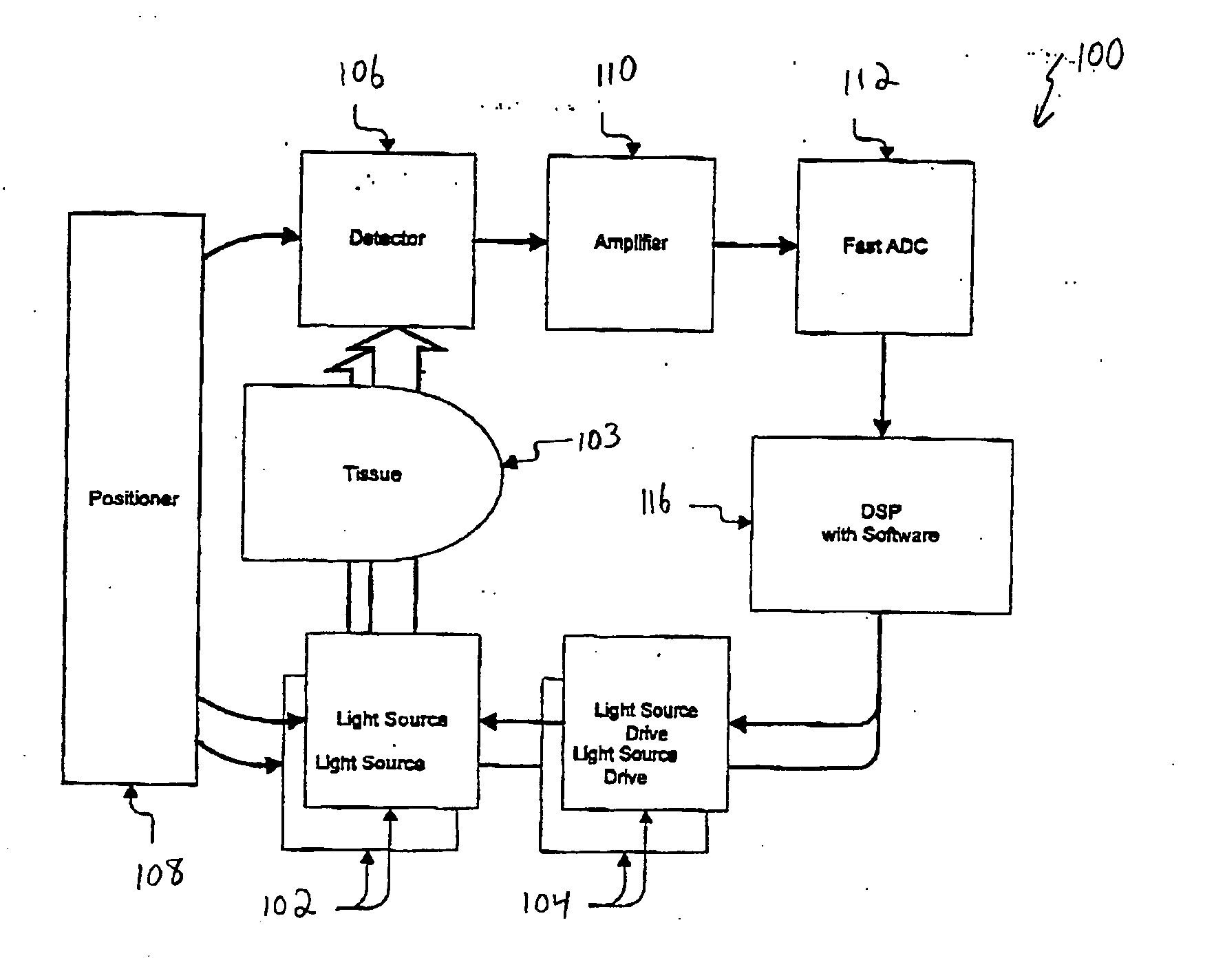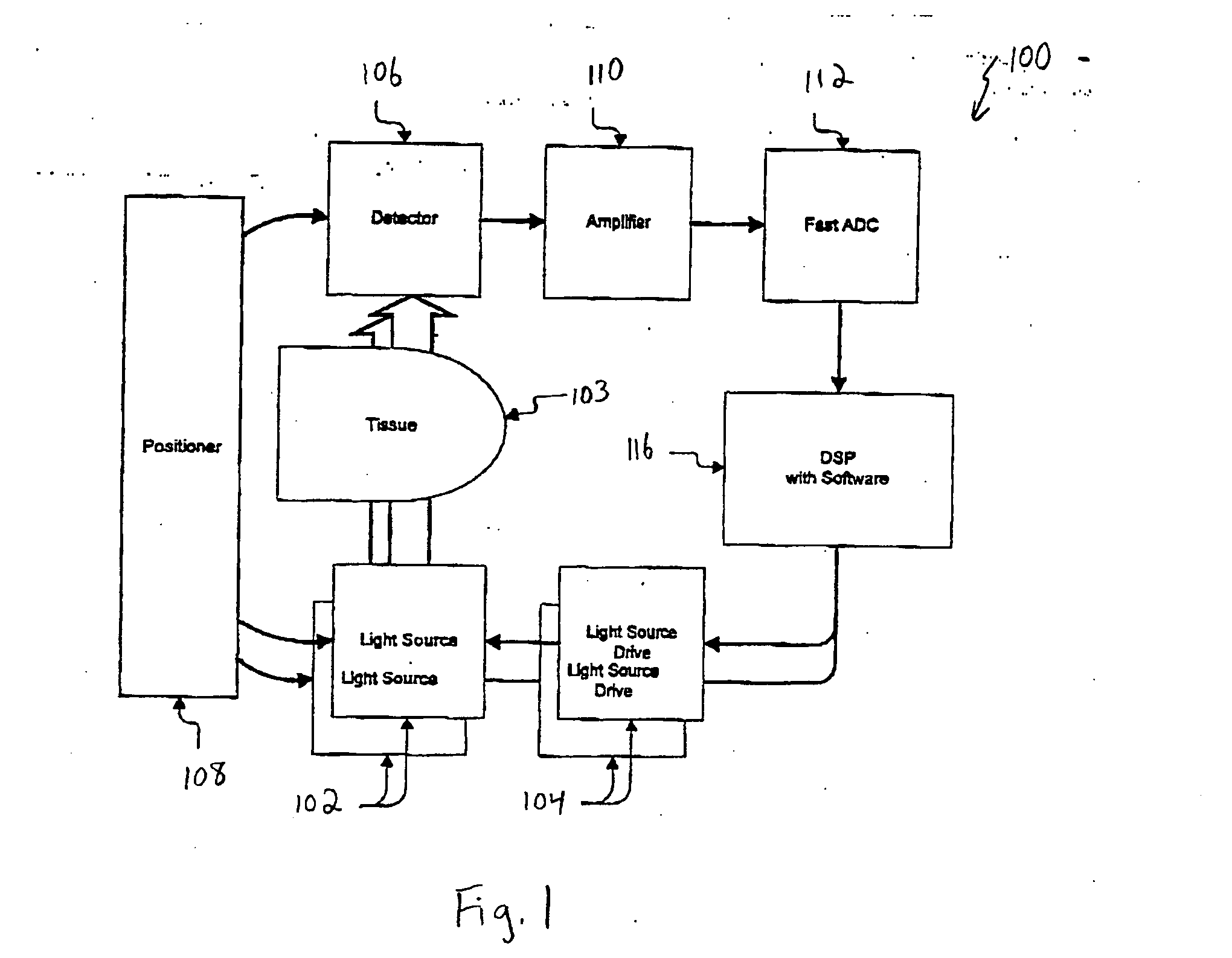Oversampling pulse oximeter
a pulse oximeter and oversampling technology, applied in the field of pulse oximeters, can solve the problems of inability to provide digital signals, limited processing options, and inability to integrate a/d converters, etc., to achieve more accurate analysis of the detector output, increase the size, complexity and expense of hardware design, and reduce the effect of processing costs
- Summary
- Abstract
- Description
- Claims
- Application Information
AI Technical Summary
Benefits of technology
Problems solved by technology
Method used
Image
Examples
Embodiment Construction
[0017] In the following description, the invention is set forth in the context of a two channel, frequency division multiplexed pulse oximeter with an oversampling A / D converter. It will be appreciated however that various aspects of the present invention are applicable in connection with alternative pulse oximeter implementations. For example, the present invention can be used in connection with TDM or other non-TDM multiplexed signals. In addition, the present invention accommodates pulse oximeters with more than two channels. Moreover, although the invention is disclosed in connection with a preferred hardware implementation where all of the light channels are processed by common hardware components and various signal processing functions are implemented in digital processing, the light channels may be processed in separate hardware channels and additional analog processing components may be utilized while taking advantage of certain teachings of the present invention. Accordingl...
PUM
 Login to View More
Login to View More Abstract
Description
Claims
Application Information
 Login to View More
Login to View More - R&D
- Intellectual Property
- Life Sciences
- Materials
- Tech Scout
- Unparalleled Data Quality
- Higher Quality Content
- 60% Fewer Hallucinations
Browse by: Latest US Patents, China's latest patents, Technical Efficacy Thesaurus, Application Domain, Technology Topic, Popular Technical Reports.
© 2025 PatSnap. All rights reserved.Legal|Privacy policy|Modern Slavery Act Transparency Statement|Sitemap|About US| Contact US: help@patsnap.com



